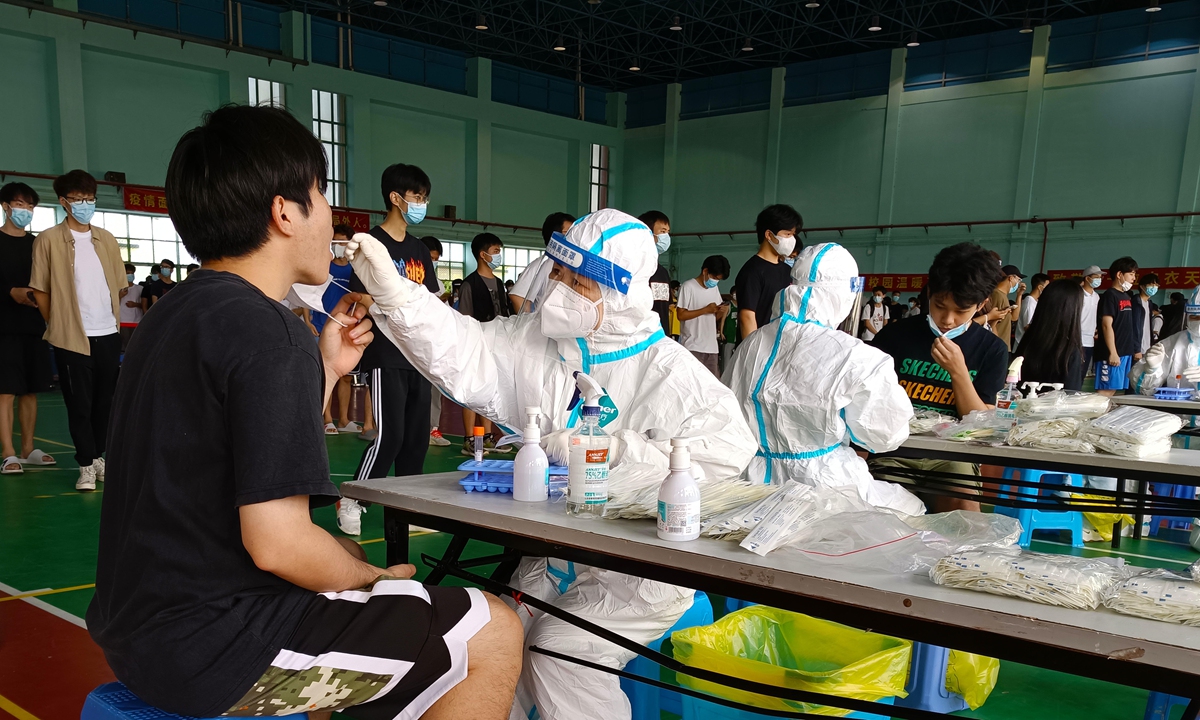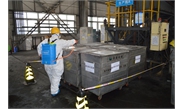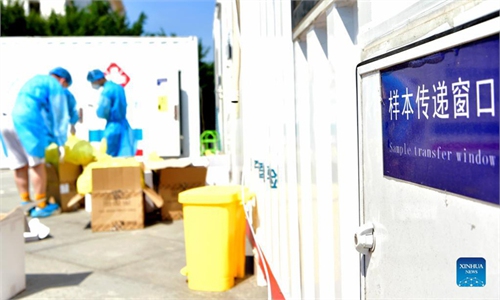
Students in Zhuhai, South China's Guangdong Province, receive nucleic acid test in April 2022. Photo: VCG
China's processing capacity of medical waste is fit for purpose, including dealing with the large amount of COVID-19 nucleic acid tests conducted in the country every day, the Chinese environment authority noted on Thursday, refuting recent hype by Western media over a potential environment crisis caused by the country's virus prevention and control work.
China's routine and emergency disposal capabilities of medical waste can fully meet treatment needs of medical waste, and all medical waste has been properly disposed of, Liu Youbin, spokesperson from the Ministry of Ecology and Environment (MEE), told the Global Times on Thursday.
The environmental supervision and service of the MEE covers all medical institutes and facilities, and all medical waste, including water, has been effectively collected, treated and disposed of, Liu noted.
China produced 1.18 million tons of medical waste in 2019, with the waste disposal capacity that year standing at 1.54 million tons. In 2021, the medical waste generated in China reached 1.4 million tons, with annual disposal capacity being 2.15 million tons, which was 39 percent higher than before the epidemic, according to Liu.
Some foreign media outlets recently alleged that protective suits, cotton swabs and test kits used in normalized nucleic acid testing for COVID-19 under China's dynamic zero-COVID policy might create an increased environmental burden.
"China's COVID mass-testing mantra is building a waste mountain," NDTV claimed. An AFP report questioned China's ability to handle medical waste, saying that the surge in medical waste is likely to prompt local governments to improperly dispose of pandemic-related byproducts, such as dumping medical waste directly into temporary landfills.
The overall situation of medical waste disposal in high-risk areas in China is stable and appropriately managed, the MEE spokesperson said. Over the past three months, the daily load rate of medical waste treatment facilities in cities, prefectures and municipalities with high-risk areas remained below 90 percent.
Among the broader group, 97 percent was below 80 percent and 66 percent was below 50 percent. "Basically, all the waste can be treated each day," Liu said.
Some localities have prepared emergency treatment facilities such as hazardous waste incineration facilities, which can be activated at any time to ensure emergency treatment of medical waste, Liu added.
Since the outbreak of COVID-19, the MEE and relevant departments have issued a number of documents and related technical instruments to strengthen the capacity of medical waste disposal.
The disposal capacity and supervision level of medical waste have been actively enhanced. Looking forward, the MEE will further strengthen the work of environmental supervision, targeting the waste caused by nucleic acid testing, Liu said.




